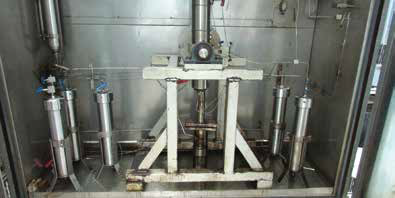Sources, mechanism and prediction method of scale formation in oil production in Vietnam
Tóm tắt
This paper presents the typical sources and mechanism of scale formation in oil production in Vietnam. A workflow of prediction method to find scale formation during oil production was presented. The main sources of scale problem in oil production are incompatible mixing between different water sources and the change of pressure/temperature along the production system. A case study using the prediction method was also introduced in the article. The decrease of productivity index of the observed well can be caused by the dominant build-up of scale at downhole. Based on the mechanism of scale formation, a suitable scale control strategy was given.
Các tài liệu tham khảo
2. Guihong Pei, Chunyang Wang, Lili Liu. Experimental study on the cause of inorganic scale formation in the water injection pipeline of Tarim oilfield. Journal of Chemistry. 2014.
3. J.Moghadasi, H.Müller-Steinhagen, M.Jamialahmadi, A.Sharif. Scale deposition in porous media and their removal by EDTA injection. Engineering Conferences International
Symposium Series: Proceedings of 7th International Conference on Heat Exchanger Fouling and Cleaning - Challenges and Opportunities, Tomar, Portugal. 1 - 6 July, 2007.
4. Francisco J.Alcalá, Emilio Custodio. Using the Cl/Br ratio as a tracer to identify the origin of salinity in aquifers in Spain and Portugal. Journal of Hydrology. 2008; 359(1 - 2):
p. 189 - 207.
5. Amer Badr Bin Merdhah, Abu Azam Mohd Yassin. Study of scale formation in oil reservoir during water injection - A review. Marine Science & Technology Seminar,
Kuala Lumpur, Malaysia. 22 - 23 February, 2007.
6. Amer Badr Bin Merdhah, Abu Azam Mohd Yassin. Scale formation in oil reservoir during water injection at high-salinity formation water. Journal of Applied Sciences.
2007; 7(21): p. 3198 - 3207.
7. M.Amiri, J.Moghadasi. Prediction the amount of barium sulfate scale formation in Siri oilfield using OLI ScaleChem software. Asian Journal of Scientific Research.
2010; 3(4): p. 230 - 239.

1. Tác giả giao bản quyền bài viết (tác phẩm) cho Tạp chí Dầu khí, bao gồm quyền xuất bản, tái bản, bán và phân phối toàn bộ hoặc một phần tác phẩm trong các ấn bản điện tử và in của Tạp chí Dầu khí.
2. Bằng cách chuyển nhượng bản quyền này cho Tạp chí Dầu khí, việc sao chép, đăng hoặc sử dụng một phần hay toàn bộ tác phẩm nào của Tạp chí Dầu khí trên bất kỳ phương tiện nào phải trích dẫn đầy đủ, phù hợp về hình thức và nội dung như sau: tiêu đề của bài viết, tên tác giả, tên tạp chí, tập, số, năm, chủ sở hữu bản quyền theo quy định, số DOI. Liên kết đến bài viết cuối cùng được công bố trên trang web của Tạp chí Dầu khí được khuyến khích.




